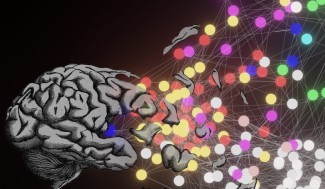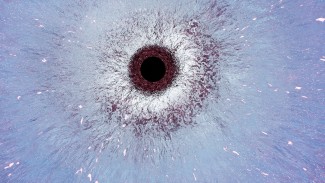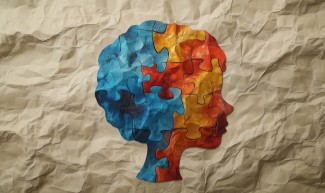In a recent paper, published in Reviews of Modern Physics, Charley Presigny and Fabrizio de Vico Fallani (Inria) from the ARAMIS team from the Paris Brain Institute present a new mathematical model to decipher the brain organization and function in time and space.
The brain, a complex multi-scale system
Brain function develops simultaneously on different axes or dimensions, within which several scales exist. On the temporal axis, aging occurs on a life-time scale, learning on a weekly or monthly scale, and behavior on shorter scales of milliseconds. The spatial axis considers the brain either as a whole or by region, or even by neuron. The third dimension is represented by the interactions between neurons or brain regions, at the individual, group or network level (topology).
One of the problems that limits the understanding of the brain is its complexity, notably due to this multi-scale composition. It is interesting from a theoretical and applied point of view to propose new mathematical approaches to study and characterize the brain function
Modalized networks complexity
The interactions between the different units of a system can be of different nature. For example, in daily life, such as social interactions, this diversity of interactions is rather obvious. Two people can be in contact through different means such as Facebook, email or phone, and their interactions can follow very different dynamics. One can regularly exchange with someone on Facebook or Instagram and never have sent them an email. This is, in a simplified way, the fundamental principle of the theory of complex multilayer networks, whose potential for understanding the human brain is now suggested by researchers.
The objective is to take into account all these interactions in an interconnected system. It is possible to represent the different axes of the system in the form of layers. In each of these layers, there is a network whose interactions and nodes vary. To this, we must add the exchanges between the different layers that increase the complexity of the system.
Links between brain structure and function
A key issue in neuroscience is to understand how the structural and functional organization of the brain are linked together, and how these associations give rise to complex brain capacities such as perception, attention or cognition. In this context, the multilayer network approach represents an interesting model to improve our understanding of the link between brain anatomy and function.
Diffusion MRI allows the reconstruction of connectivity network structures, while functional MRI provides information on brain activity. The results obtained from several studies reveal new patterns of connectivity between brain structure and activity. Thus, when two regions are anatomically connected to a common region, the probability that they can communicate with each other at the functional level increases.
This model is integrating anatomical and functional data and provides information impossible to obtain by analyzing the layers separately
Neurons need in energy during learning
To model a key mechanism that is learning, other researchers have developed a multilayer network model.
- The first layer contained dynamic networks of neurons - representing brain plasticity, the ability of our brains to reshape their connections in response to our experiences and learning.
- The second was networks of glial cells, whose roles is to provide energy resources to neurons.
- The third layer represented the connectivity between the first two layers, in other words the transfer of energy from glial cells to neurons.
The results obtained from this model showed that the regulation of energy supply by the glial cells allows to change the dynamics of the neurons, during the learning period.
The challenge: modeling brain complexity
The theory of complex multilayer networks represents a promising avenue for deciphering the organization and multiplicity of interactions at different scales in the brain. It opens new perspectives to better understand and identify dysfunctions and topological modifications during brain pathologies.
Sources
Charley Presigny and Fabrizio De Vico Fallani. Multiscale modeling of brain network organization
Rev. Mod. Phys. 94, 031002 – Published 2 August 2022







